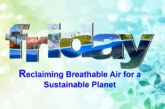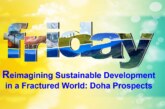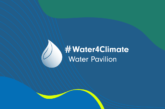
Dr. Arvind Kumar*

The world is crying out for high-level political action. Actions to make the Sustainable Development Goals a reality for everyone, everywhere” said Antonio Guetress, Secretary General United Nations at the general debate of the High Level Political Forum 2023 in New York. The goals are self-consciously ambitious, and are at least partly intended to encourage extra effort beyond current levels. In today’s age, climate change poses the single biggest threat to sustainable development everywhere and its widespread, unprecedented impacts disproportionately burden the poorest and the most vulnerable. During the discussions at HLPF that I have been attending in New York the discussions are unfolding on the stumbling blocks in the way to achieve the SDGs by 2030. Like the ever rising issue of climate change which is already exerting serious strain on many goals of the SDGs since it is intrinsically linked to all 16 of the other Goals of the 2030 Agenda for Sustainable Development. Undoubtedly, climate change is slowing down the efforts and the progress to achieve the SDGs. India is already mentioning that they will achieve the SDGs before time. But are we on the right path to achieve the SDGs by 2030?
Not a single goal will be met by 2030 if current trends continue!!

Climate change is a threat multiplier. It is amplifying existing threats, exacerbating problems for the economy, environment and society. The main driver of biodiversity loss remains humans’ use of land – primarily for food production. Human activity has already altered over 70 per cent of all ice-free land. When land is converted for agriculture, some animal and plant species may lose their habitat and face extinction. But climate change is playing an increasingly important role in the decline of biodiversity. Climate change has altered marine, terrestrial, and freshwater ecosystems around the world. It has caused the loss of local species, increased diseases, and driven mass mortality of plants and animals, resulting in the first climate-driven extinctions.
The current global temperature has already begun producing serious negative impacts on natural and human systems, seriously impeding progress toward some SDGs. The current warming is already having large impacts on ecosystems, human health and agriculture. As a result, reaching goals to eradicate poverty, hunger, and to protect life on land have become more challenging. High levels of water use and heavy reliance on ecosystem services render this sector especially vulnerable to environmental change. Growing zones for food crops will shift as local climates change. Marine fish stocks are increasingly overexploited or depleted, while ocean acidification and higher water temperatures are thought to be major factors in the degradation of coral reef ecosystems, which provide nursery grounds for some commercially important fish species.
Amplifying the Integrated Approach

There is a fundamental interconnectedness of the climate change and biodiversity loss crises, and more integrated approaches are needed to address them. Actions that capitalise on the contributions of nature, known as nature-based solutions, and are based on inclusive decision-making that recognises the land rights of indigenous peoples and local communities, are especially crucial to acting effectively to address climate change and biodiversity loss. Climate change and biodiversity loss (as well as pollution) are part of an interlinked triple planetary crisis the world is facing today. They need to be tackled together if we are to advance the Sustainable Development Goals and secure a viable future on this planet. Reaching this goal is, indeed, a tall order for curbing climate change, since for all practical purposes we are still globally following a Business-As-Usual path. The greatest obstacle before us is the current heavy dependence on fossil fuels as our chief source of energy. Thus, the first necessity is a very rapid phase-out of the consumption of coal, oil and natural gas as the mainstay of our economy. This can be achieved in various ways, including instituting adequately-priced carbon taxation, creating financial incentives for both producers and consumers, and generously subsidizing the renewable energy sector.
Way Forward
Since time is of the essence right now, corrective and transformative measures should be launched and implemented at the earliest possible date. A similar approach should be considered for drastically reducing biodiversity loss in all regions of the globe. This would include the restoration of degraded natural ecosystems, empowering local inhabitants to help preserve and curb human encroachment on species habitats, and calling for an internationally-agreed prohibition of all large-scale deforestation projects. Additionally, the enormous quantities of plastic waste killing life in the oceans and coastal environments must be cleaned up by an ambitious world-wide effort.
The problem of global water scarcity needs immediate attention. Above all, availability of water resources should be considered a basic human right, with communities being given ready access to clean water and sanitation services. This would entail providing financial assistance and grants for the construction of local water resources infrastructure, along with fair and equitable pricing, and in the proper allocation of both surface and groundwater in the community. Strong emphasis should be placed on nature-based solutions and on water conservation measures, including instituting sustainable, regenerative agricultural practices, and in protecting local watersheds and urban vegetation.
Climate change and the subsequent global warming is not just a long-term issue. It is happening today, and it entails uncertainties for policy makers trying to shape the future. Urgent action to halt climate change and deal with its impacts is, therefore, integral to successfully achieving all SDGs. Collective efforts are needed at all levels, adopting nature and science based solutions, reflecting different circumstances and capabilities, to limit global warming to 1.5C, taking into account equity and effectiveness, so that the global response to climate change is strengthened, and thereby, achieve sustainable development as targeted by the UN member states. The result will be a cleaner, sustainable, more productive, and stronger global economy.
*Editor, Focus Global Reporter



